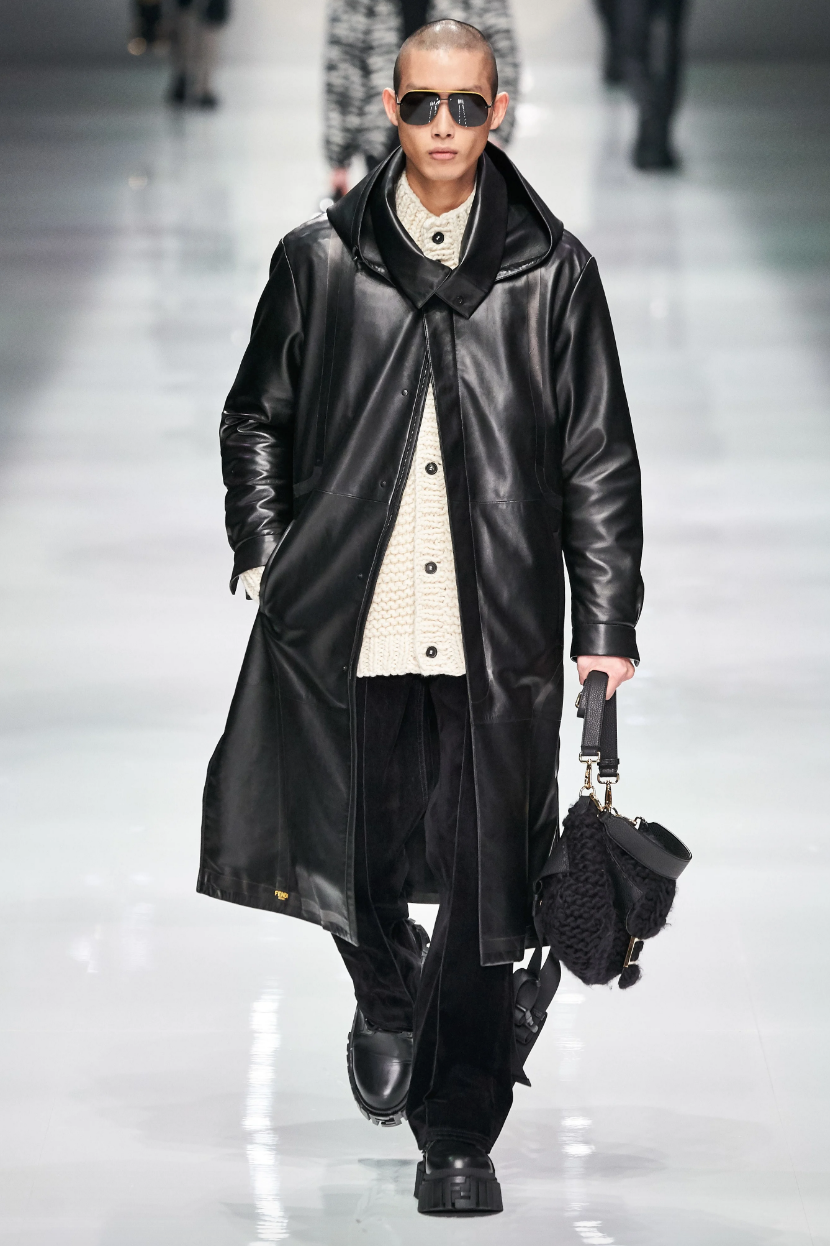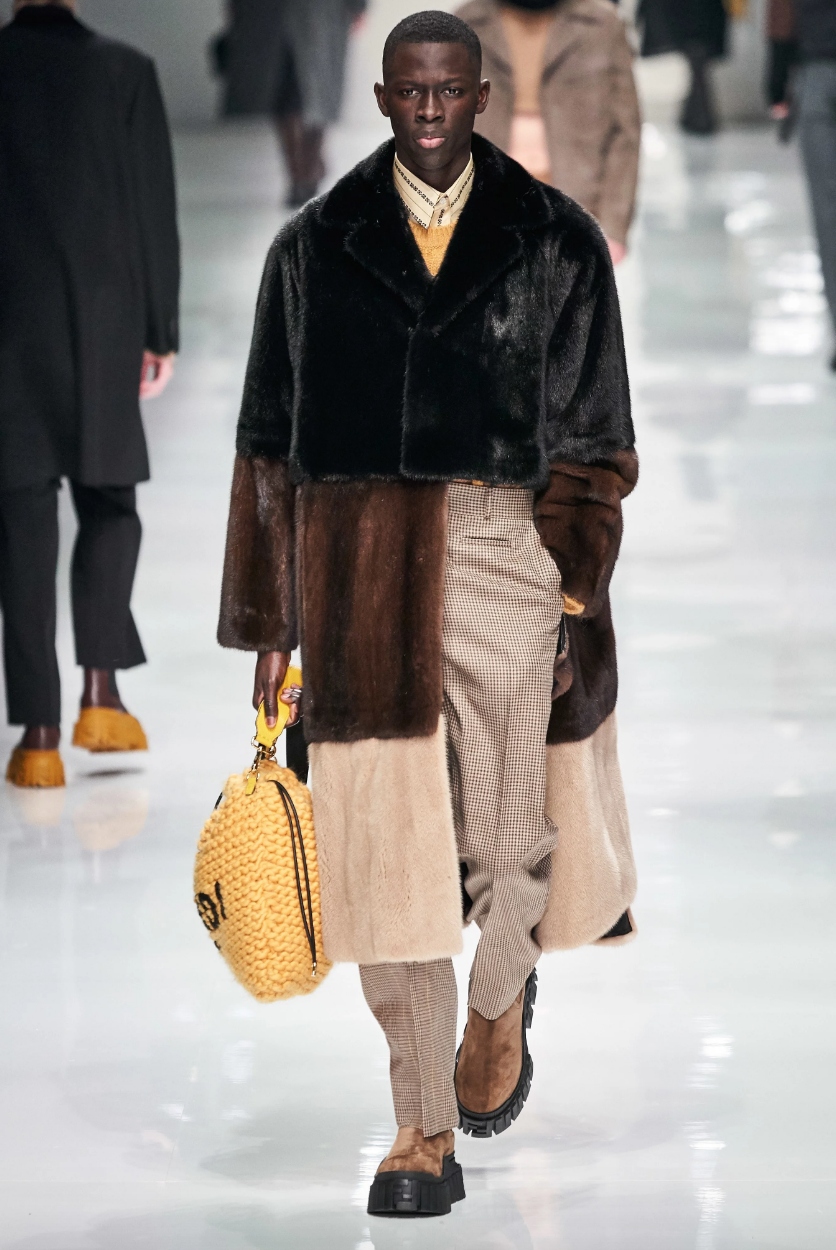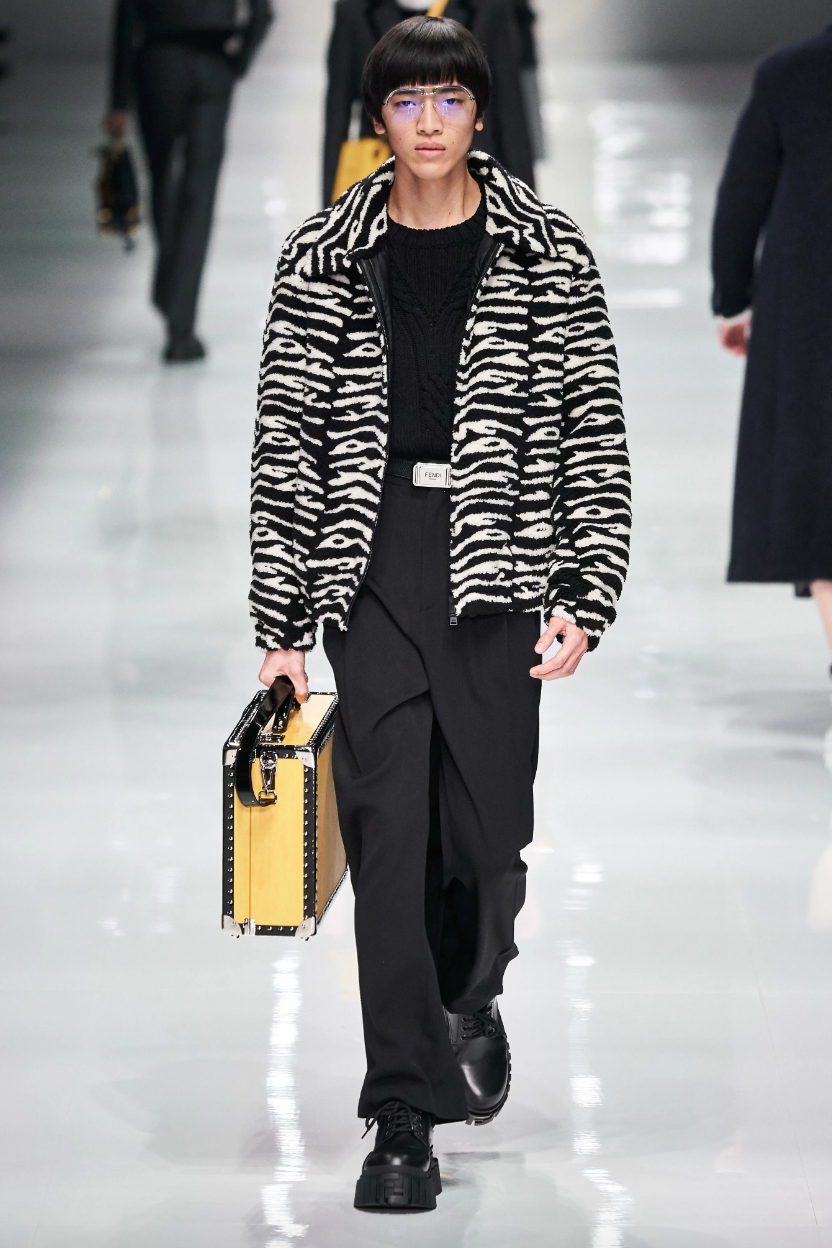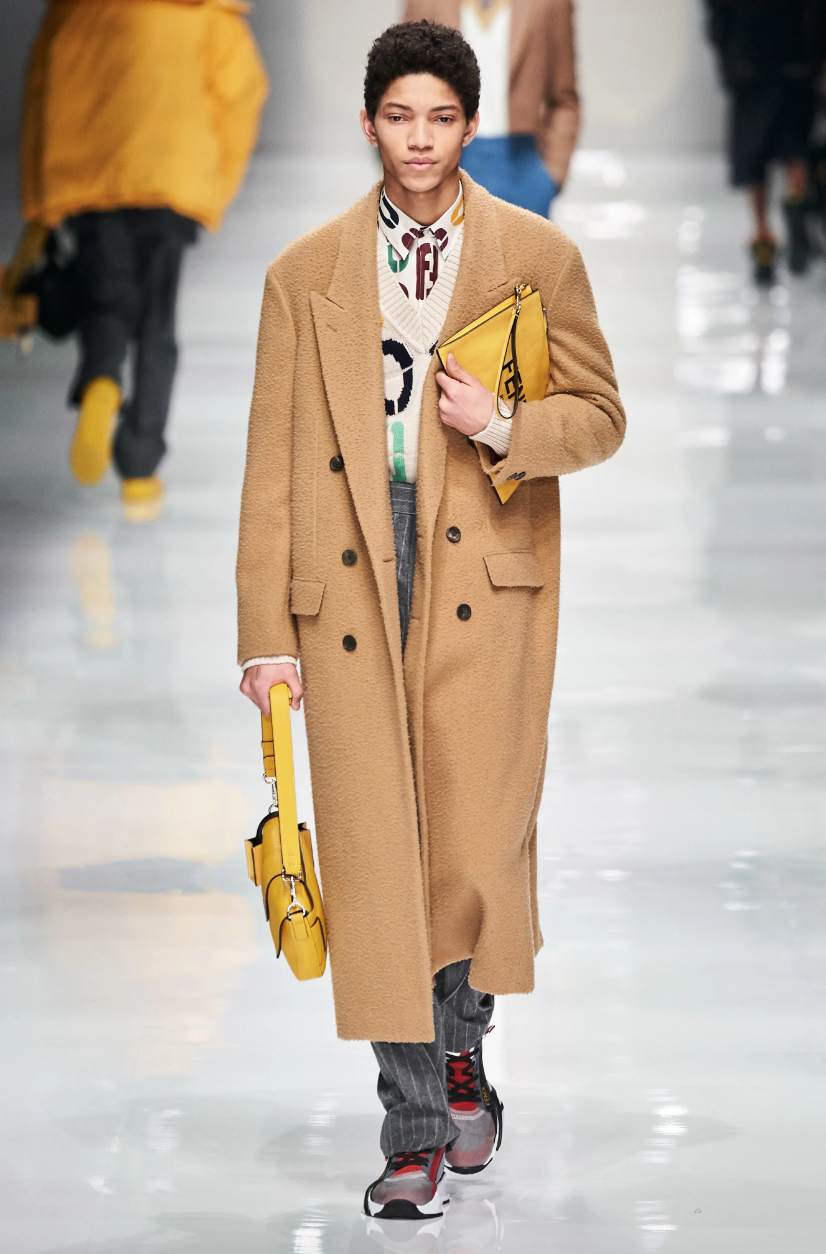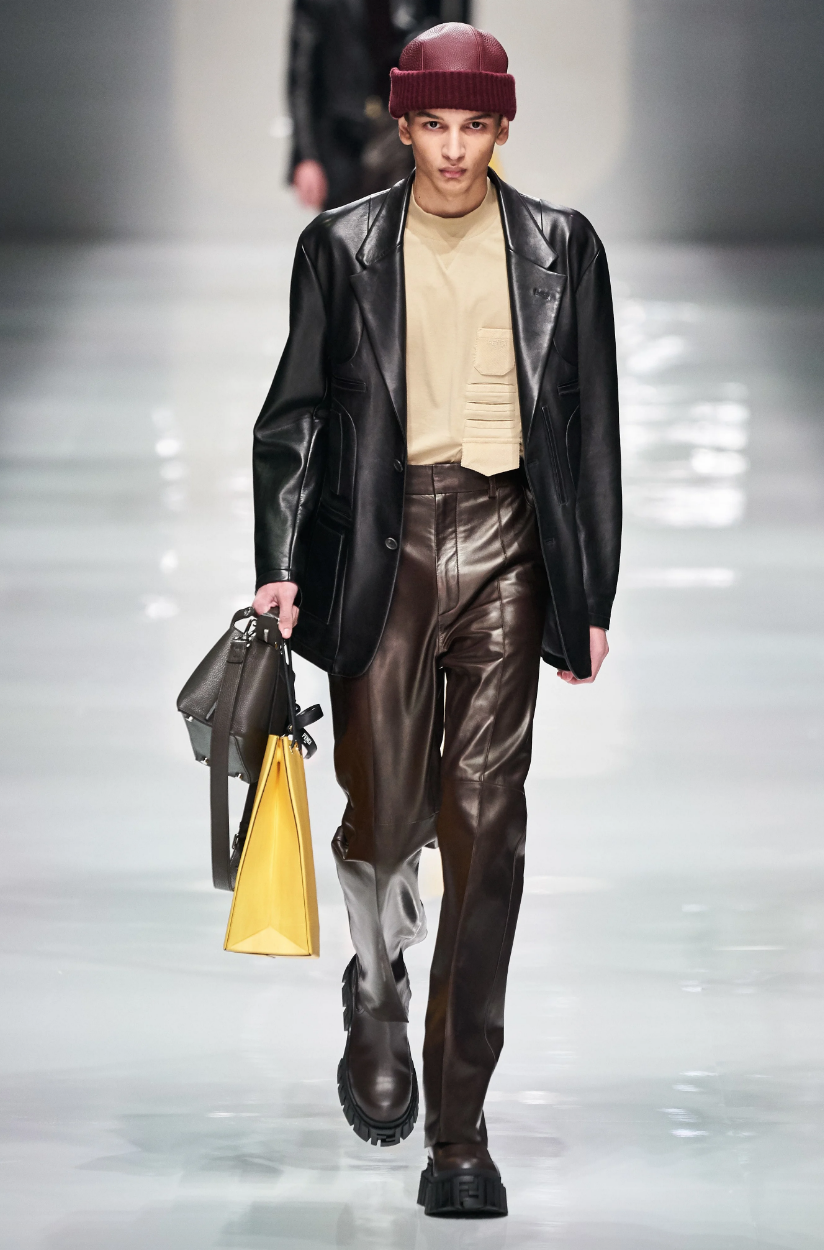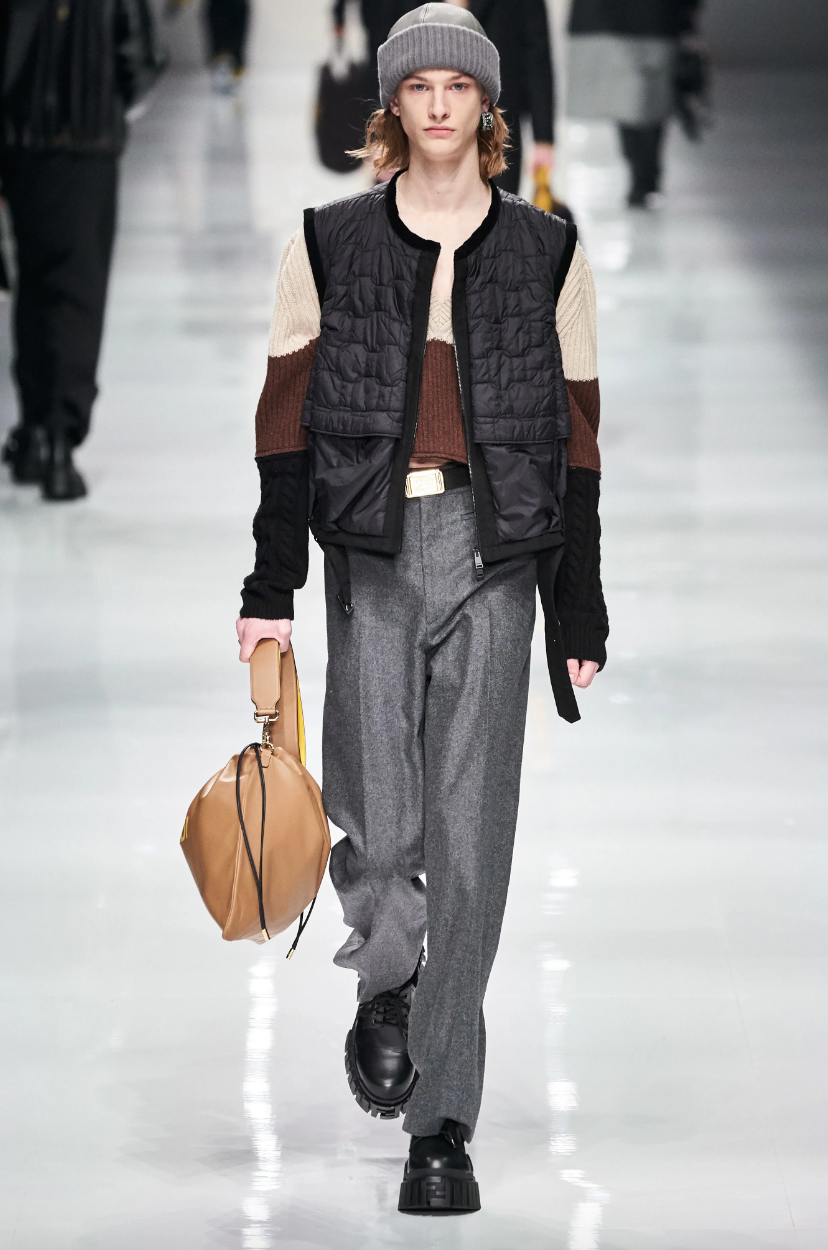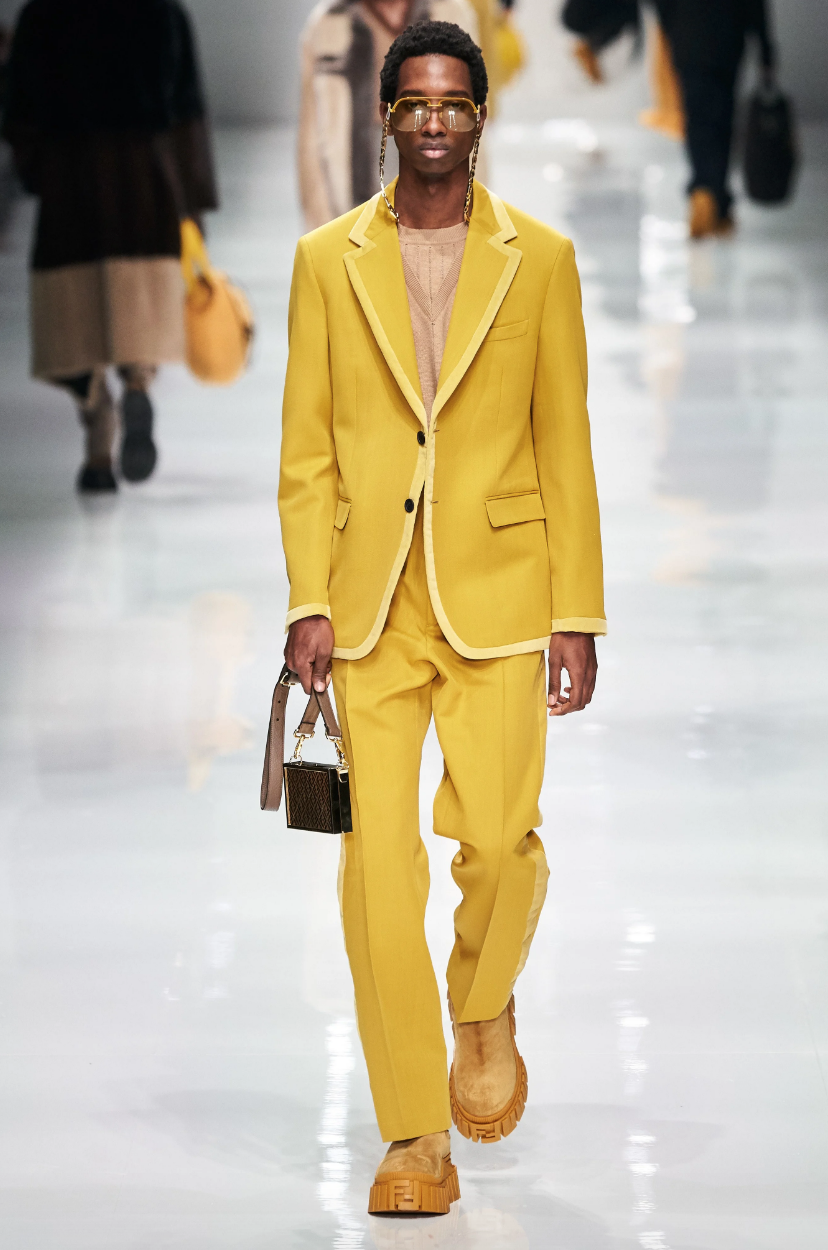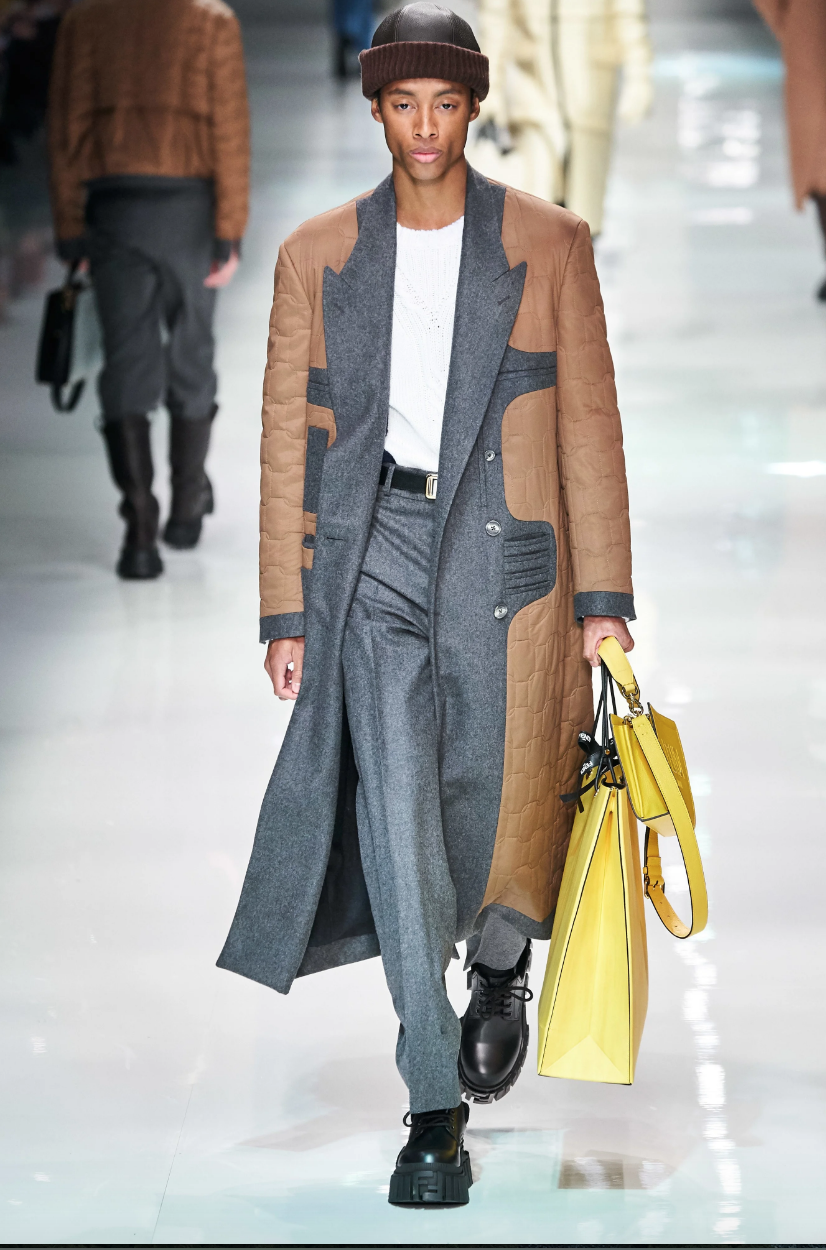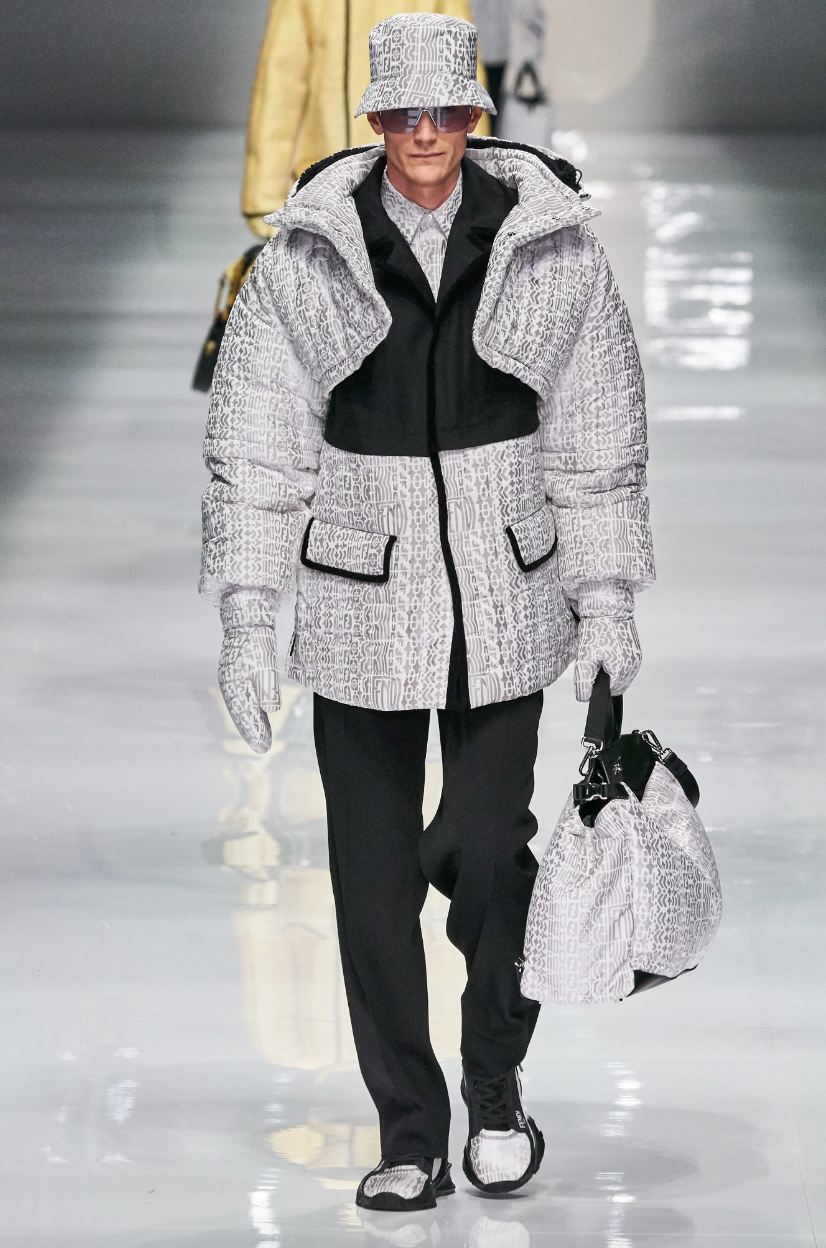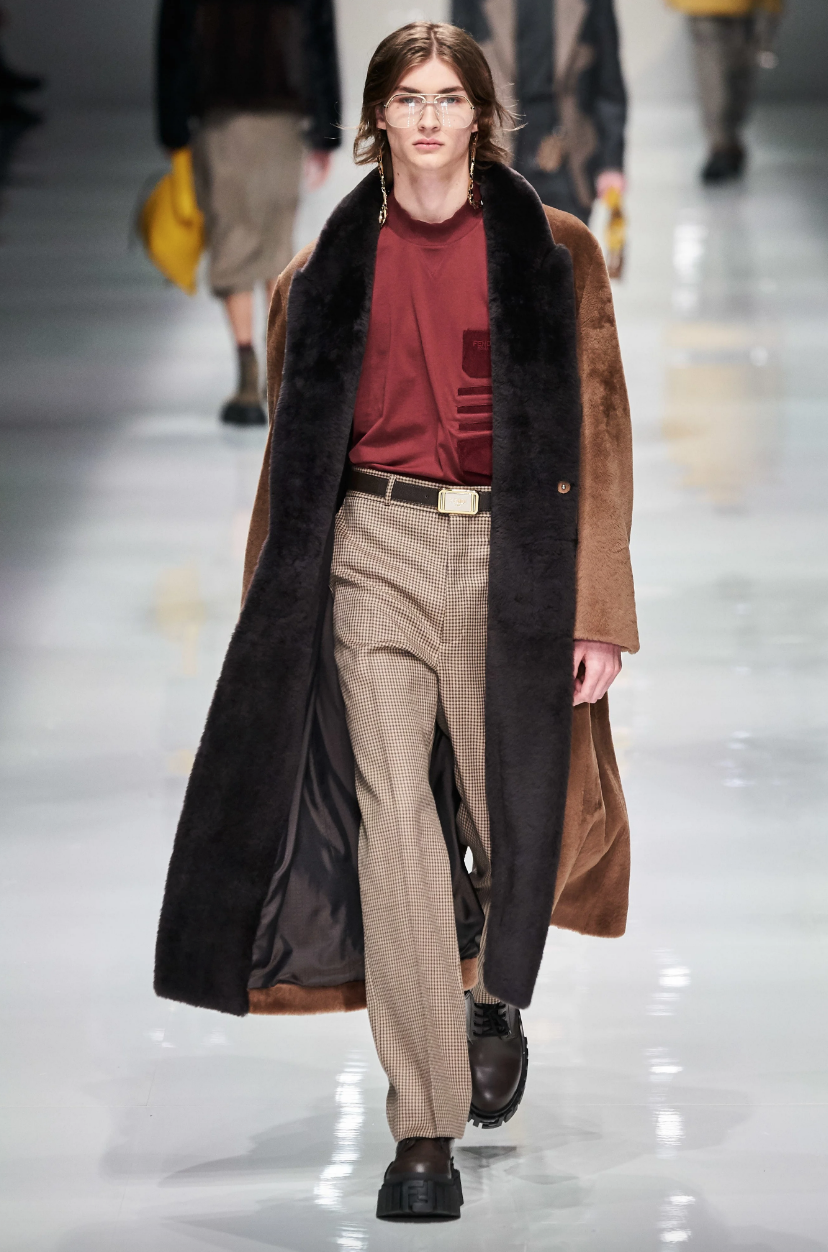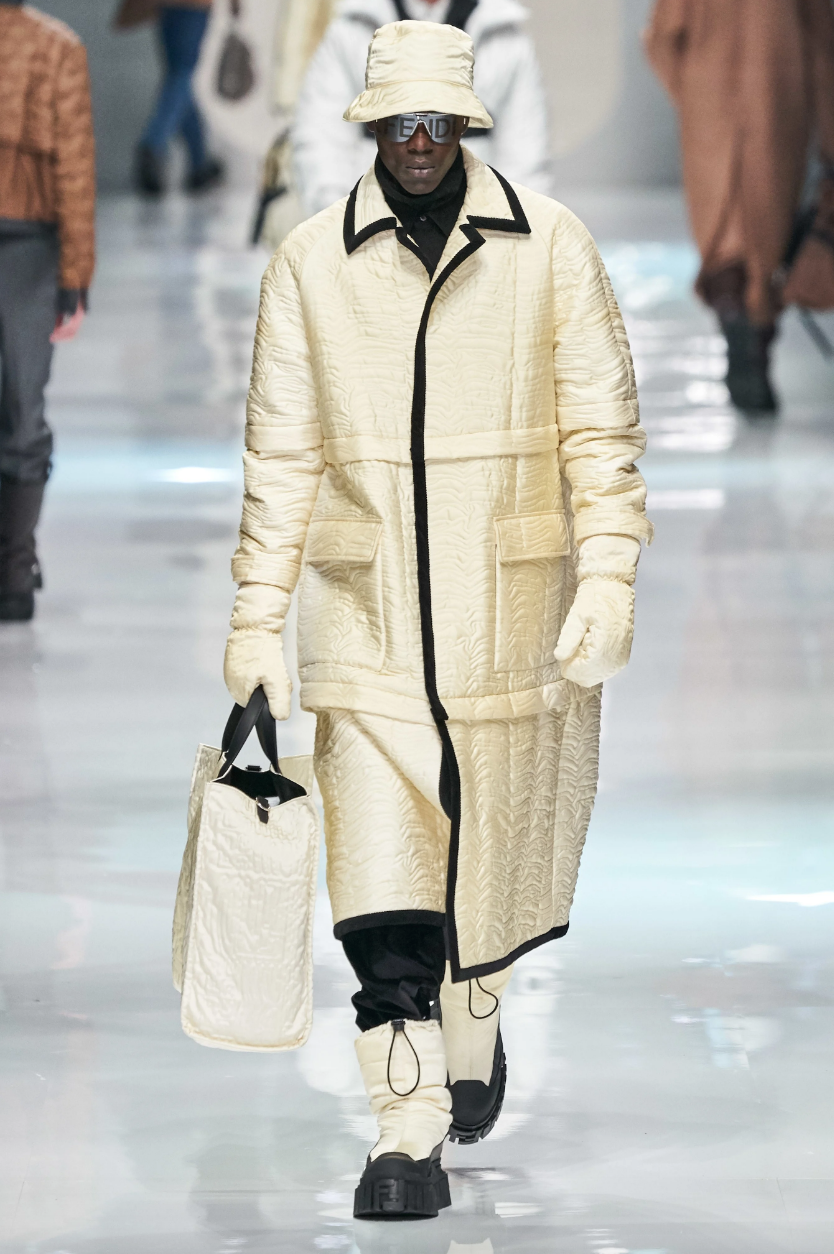Fendi Fall 2020 Menswear
/Shortly after his participation at the LVMH Prize event last year, the shortlisted designer Kunihiko Morinaga of Anrealage was approached by Silvia Fendi. Would, she asked, he consider being part of her next menswear show? Morinaga said yes, of course, and backstage this morning he could be found watching the final lineup. Fendi, he noted, is a seriously big operation.
When his looks came out the planned Anrealage coup de théâtre did not quite come off. Those of us who attend his women’s shows in Paris could anticipate what to expect, but for the rest of the audience the transformation of his four looks from white slate to logo’d and patterned when placed under UV light was too subtle to startle.
However, that isn’t to say they didn’t make a fitting closing gesture at a show whose very interesting collection felt like it was about putting what is conventionally on the inside on the outside, and about modularity, and about technology, and about the place of classicism in an iconoclastic age—this collection was about a lot. It also looked good.
Backstage, Fendi said her reach-out to Morinaga had come out of the thinking that led to her solar women’s show shortly before that LVMH event last September and because her early thought of this menswear collection had included the notion of “transforming garments.” Away from Anrealage’s photochromatic transformation, Fendi’s shape-shifting attire including three-panel coats in fur or different tones of flannel that could be unzipped according to whether you planned to wear an overcoat, a jacket, or a bolero. There were also pants (from the front) and skirt (from the back) hybrids, which moved easily and looked attractive. There was another dialectic in the patterned jackets, coats, and hats: Some were in patched shearling that looked like cashmere, others in tufted cashmere that looked like shearling. “I want to give everybody the choice,” said Fendi.
She said her fundamental agenda was “to work on the essentials of the classic wardrobe of a man of tomorrow,” and one especially clever, modernizing twist on the classic was bringing the contours of linings and inside pockets to, a whole panoply of coats, vests and jackets. For good measure, Fendi added several credit card pockets and an AirPods compartment, and revived the historical cigar pocket. On contrast tailored jackets, leather jackets, and even shaved shearling, these outlines were both attractive and functional.
Another almost Surrealist but simultaneously functional play on interior and surface was the presentation of bags that appeared to be pieces of Fendi yellow packaging, rather than actual Fendi products. There was an oversize Fendi shopper in leather, and multiple Fendi boxes that were more like tiny trunks. Opening a box to reveal an item designed to be nearly identical to its packaging would surely be the ultimate Barthesian feedback loop.
The packaging riff extended to the garments via yellow taping stamped with Fendi Roma that defined the seams of certain outerwear pieces, and knit bags which had a satisfyingly hand-wrought roughness to them but that also resembled shoe and garment holders. For footwear, Fendi proposed a luxurified version of a mid-calf gumboot, also seen at Dolce, Ferragamo, and Prada. This was a collection rich in obvious luxury, in that the fabrication and construction was both extremely elevated and expertly done. It was also rich in ideas and ambition—a much more subtle but potent ingredient for luxury—and there were in those inside-out pieces quite probably a few of the future classics Fendi said she aspired to.
Source: Vogue
FASHIONADO


